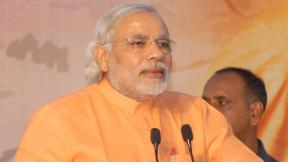
In March and April of last year, as much of the United States and many parts of the world began lockdowns due to the COVID-19 pandemic, Mona Kafeel, Executive Director of the Texas Muslim Women’s Foundation, noticed a puzzling trend: The number of calls to the organization’s domestic violence helpline dropped - but more messages were being sent in other ways.
“Our hotline numbers decreased but at the same time, we saw some clients reaching out to us through WhatsApp and Facebook,” she said in an interview with Sound Vision. Kafeel soon discovered why: many of the mostly women who called for help had had phone lines cut by their abusive spouses. They could no longer connect to the outside world for help by phone, and in some cases, even through wifi. Because of the financial hit millions of Americans faced due to the pandemic, cutting phone services was one way some chose to cut back on expenses.
Kafeel quickly established a way to connect to the organization’s hotline via WhatsApp. However, by July and onwards, Kafeel said “the number of calls exploded.” She noted also that they were “way more disturbing calls, way more disturbing clients.”
Greater violence against women and girls during the COVID-19 pandemic has been noted as a worldwide phenomenon, including domestic violence. The United Nations has described it as the “shadow pandemic”: an unseen pandemic within the pandemic, and it is now trying to raise awareness about it.
Muslims are no outliers to this phenomenon, as Kafeel, and other leaders, experts, and organizations have discovered.
“From my dealing with the Imams’ council, you see an increase in domestic violence cases and more conflict issues between couples or between the family,” said Khalid Iqbal, secretary of the Michigan Council of Imams and founding director of the Rahmaa Institute, which offers premarital and marriage counselling. “And it’s not only happening within married couples, but it’s also between parents and children or between elders and young people in the context of the family.”
Domestic violence: Not just about stress
A survey by the American Psychological Association (APA) conducted during the first wave of the pandemic last year found that the average reported stress level for U.S. adults related to the pandemic was 5.9. When asked to rate their stress level in general, the average reported stress for U.S. adults was 5.4. The APA noted that this was significantly higher than the average stress level reported in 2019, which was 4.9. The shift marked the first significant increase in average reported stress since the survey began in 2007.
Some say that the added financial, psychological, and emotional stress brought on by the pandemic is why domestic violence has risen. But while this can lead to more conflict in the family, it does not necessarily lead to domestic violence.
“Someone throwing a plate across the room by itself is not domestic violence,” explained Denise Ziya Berte, a licensed clinical psychologist and executive director of the Peaceful Families Project (PFP), a national organization devoted to preventing domestic violence, with a particular focus on Muslim families. “Someone getting frustrated and yelling is not part of domestic violence. Then you might have a stress-related conflict.
“Domestic violence is based on the belief that ‘I have rights and privileges you should not have’,” she said. In specific, Berte explained that at its core, it is the idea that one partner, usually the man, can subject the rest of the family to his control to maintain his power over them. And in the cases she has seen during the pandemic, she notes that the increase in domestic violence is primarily being found in families with that pre-existing pattern and belief system.
Iqbal has found the same. “The majority of the cases based on my experience and talking to others, Imams and community leaders, it is mostly the cases that had either underlying (problems) or they were already families with domestic violence.”
Victims lose their support systems, including mosques and schools
With lockdowns, many of the support systems that victims had before the pandemic have been shut down or available only on a limited basis. While domestic violence shelters remain open, and have been maintaining COVID-19 restrictions, many are struggling to stay afloat. But the loss of other supports is also having profound effects.
”The safety nets are gone,” said Masumeh Farchtchi, a Muslim family and couples counselor in private practice in Northern Virginia. “We lost schools and daycare settings. All of that is coming down on parents and that is more things to fight about, more things to decide about. In a couple system where there was already dysfunctional communication, it makes it worse.”
Farachti said that for many Muslims, support came from the local Muslim community and the mosques, most of which are now unavailable for large gatherings.
“Especially practicing Muslims, their community was the Masjid, not necessarily their direct neighborhood,” she said. This loss of access means no Friday prayers where congregants can meet as easily, no youth groups, no women’s groups, no in-person visitation.
“Those leave victims at higher vulnerability because no one is seeing what is happening and there is no release during the day (for the victim), where ‘my husband is going to work’ or ‘my kids are going to school’,” said Berte. “Nobody’s got an eye on some of our highly vulnerable families,” she added.
This can lead to depression, death at the hands of an abuser, and suicide. “When people feel hopeless that can be a very dark place,” said Farachti. “And right now that is happening to a lot of people. They just don’t see the end of the problem. Family violence puts a person at greater risk for depression which can lead to suicide. We are seeing a huge increase in suicide because of this pandemic and it is not just non-Muslims experiencing this.”
Imams on the Frontline
Amid this crisis, Imams play a critical role. A 2017 survey by the Institute for Social Policy and Understanding (ISPU) found that Muslim Americans are much more likely to report crimes of domestic abuse to their local clergy. Whereas 51 percent of Muslims reported abuses to their local clergy, only 35 percent of Protestants, 28 percent of Jews and 23 percent of Catholics claimed doing the same.
“Imams definitely play a very significant and major role in the life of an average Muslim,” said Iqbal. “They respect them and they feel they can get their answers and they look at the Imam as the pathway to Jannah if they follow them. Having said that, unfortunately, our community is not ready to put any financial or other support to the Imams.”
One way to do that is by offering adequate training in how to handle domestic violence. This is something the Peaceful Families Project has given special focus to. But teaching Imams to delegate and refer domestic violence cases to others is also key.
“Imams should learn to work in collaboration with other domestic violence services to create a referral network,” said Hasnaa Mukhtar, a PhD. candidate researching gender-based violence in the Muslim community at Clark University, who is also affiliated with the Peaceful Families Project and a domestic violence survivor. “There is plenty of information online. They should have it handy.”
Berte emphasized that the role of Imams should not just be “educating Muslims about what Islam says about domestic violence, but also working with local and national organizations (to provide) what Muslims need.”
She likened this to the way they offer other forms of assistance to the community.
“If someone wants them to pray for their cancer they are not expecting them to also provide chemotherapy,” she said.
This model has worked in Texas, where Kafeel said she reaches out to any new Imam who arrives in the state to be trained by her organization, which runs two shelters and 27 transitional apartments for victims, in how to handle domestic violence. “We have very strong relationships with Imams,” she said. “At any given time we have 15 to 20 Imams on speed dial.”
Kafeel also notes that Imams have been threatened by abusers for trying to help victims, especially if the abuser is an influential member of the community. “That is an overwhelming issue for them,” she said.
Short-term solutions
For families facing domestic violence during the pandemic, there is often reluctance to call the police or to contact shelters not run by Muslims, which are rarely found outside of large urban centers. This can be due to fear of police brutality, especially in the case of Black Muslims, Mokhtar said.
However, in a life or death situation, it is necessary to call 911. “A lot of people become desensitized to the violence and they don’t realize how close to death they are,” said Farachti. “This is one reason we see it cycling through families.” She warned that death by domestic violence “might not happen in their generation, but it might happen in their child’s.”
In terms of turning to shelters not run by Muslims, the reluctance is often because of fear of ignorance about Islam and Muslims by staff. But Kafeel said that can be handled when shelters like hers coordinate with those in other parts of the country to help.
She gave the example of a case she handled from outside of Texas in which “I gave 45 minutes of fast track Muslim cultural sensitivity training over the phone to help a Muslim client” who was in a shelter not run by Muslims.
Berte also suggested measures to check in on local families during the pandemic, with Imams and Masjids organizing “virtual visiting teams”, calling a few people or families daily to do a check-in, as well as offering a continuing variety of online programming. Besides Friday sermons, she said that her local mosque was offering online cooking classes and reading stories online for kids. In essence, the goal is “to keep the community involved and engaged. She also emphasized it is important to have someone answering calls, so that those who don’t have online access to the Masjid can still reach it easily.
Long-term solutions
Post-pandemic and beyond, all of the experts interviewed for this article agreed that breaking the cycle and prevalence of domestic violence will require the following: better funding of Imam-training programs, Muslim domestic violence shelters, and support for survivors; requiring pre-marital counseling in Masjids before couples tie the knot; overall community education about domestic violence, and better outreach and intervention aimed at abusers that emphasizes change, not just punishment.
”How can we make sure that person doesn’t come out of that experience as transformed and not just as somebody who spent a few years behind bars and then they go out and abuse other people?” asked Mokhtar.
“The goal of marriage is to make peace, Sakeena,” said Berte. “That’s really what the Islamic model of marriage is. Our model is very clear.”
Iqbal emphasized the collective responsibility of preventing domestic violence.
“Don’t shy away,” he said. “If the community knows there is an issue, they need to do something about it. In a three-legged stool, if two are the perpetrator and victim, the third is the bystander or observer. And if the observer doesn’t do anything they are just as guilty.”








Add new comment